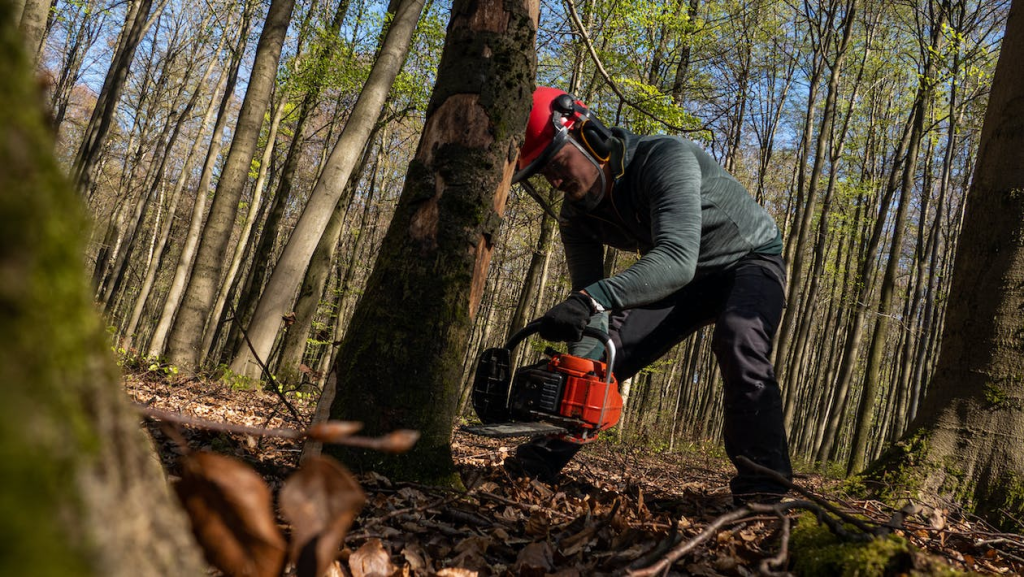We value trees for their aesthetic and climatic benefits, yet there are occasions when their removal is necessary. The process of removing a tree, whether for reasons of disease, structural instability, or the need for space, calls for thoughtful preparation, cautious thought, and profound regard for our arboreal companions.

The purpose of this set of articles is to walk you through the necessary procedures for getting ready to have a tree removed, while also pointing up viable alternatives. We know that deciding to cut down a tree can be a difficult and emotional process for some people.
The shift can be carried out safely and with minimal harm to the environment, but only if we are prepared with the knowledge and instruments to do so.
So come along with us as we take this educational trip through the process of preparing to remove a tree. Let’s explore arboriculture, the study of trees and their environs, and learn the proper way to say goodbye to these magnificent beings. By working together, we may adopt eco-friendly tree-care methods and learn to live in harmony with the forest.
How Do You Prepare For Tree Removal?
To ensure safe, efficient, and environmentally responsible tree removal, several critical actions must be taken in advance. To assist you in getting ready for tree removal, here is a complete guide:
Assess The Tree
Begin by evaluating the tree’s condition and the reasons for its removal. Look for signs of disease, decay, structural damage, or any other factors that may pose a risk to property or people. If you’re unsure, consider consulting with a certified arborist for a professional assessment.
Research Local Regulations
Check your local regulations and obtain any necessary permits or permissions required for tree removal. Some areas have specific guidelines regarding tree removal, especially for protected or heritage trees.
Hire A Professional Arborist
Engage the services of a reputable and experienced arborist or tree removal company. Look for certified professionals who have the knowledge, equipment, and insurance to handle the job safely. Ask for references and compare quotes from multiple providers to ensure you make an informed decision.
Plan For Safety
Prioritize safety during the tree removal process. Clear the area surrounding the tree of any obstacles or valuable possessions. Establish safety boundaries and inform neighbours or nearby residents of the upcoming tree removal to ensure their safety as well.
Consider Alternative Options
If possible, explore alternatives to tree removal. Consult with your arborist to determine if the tree can be treated, pruned, or transplanted instead. Preservation should always be the first consideration, especially for healthy trees.
Arrange For Waste Disposal
Discuss waste disposal options with the arborist or tree removal company. Depending on local regulations, you may need to arrange for the recycling or disposal of tree debris. Some companies offer services like chipping or mulching on-site, which can be beneficial for future landscaping projects.
Communicate With Utility Companies
If the tree is near utility lines, inform the relevant utility companies well in advance of the removal. They may need to disconnect or temporarily relocate the lines for safety purposes.
Plan For Replanting
Make a plan for replanting after the tree removal. Research suitable tree species that are well-suited to your climate and location. Planting a new tree can help fill the void left behind and contribute to the environment in the long run.
Practice Environmental Responsibility
Throughout the process, prioritize environmental stewardship. Minimize the use of heavy machinery or harmful chemicals whenever possible. Consider donating wood from the removed tree for reuse or repurposing
By adhering to these procedures, you may guarantee safe, responsible, and environmentally conscious tree removal. Keep in mind that cutting down a tree should only ever be done as a last resort and that we should do everything we can to keep our precious tree friends alive and well.
What Are The Stages Of Cutting A Tree?
To ensure safe and effective removal, cutting down a tree usually requires multiple phases. The typical steps involved in felling a tree are as follows:
Tree Inspection And Planning
Before any cutting begins, assess the tree’s condition and surroundings. Look for any signs of disease, decay, or structural instability that may affect the cutting process. Plan the direction of the tree’s fall, considering obstacles, structures, and other trees in the vicinity.
Clearing The Area
Remove any obstacles, such as furniture, vehicles, or other valuable items, from the area around the tree. Create a clear zone to ensure the safety of the workers and prevent property damage.
Tree Pruning
If necessary, prune the tree’s branches to reduce weight and make it safer to work with. Start from the bottom and work your way up, removing branches in small sections. Use proper pruning techniques to avoid damaging the tree.
Notching
The first step in felling the tree is making a notch on the side where you want the tree to fall. This notch is a V-shaped cut made on the side facing the desired direction of the fall. The notch should be roughly one-fourth of the tree’s diameter and cut at a 70-degree angle.
Back Cut
The back cut is made on the opposite side of the notch, a few inches higher than the notch’s bottom point. It is made horizontally and should intersect the notch, leaving a small section of uncut wood called the “hinge.” The hinge helps guide the tree’s fall and provides control during the process.
Felling The Tree
With the back cut completed, the tree will begin to lean and eventually fall in the direction of the notch. However, it’s crucial to maintain a safe distance and have a clear escape route in case the tree falls unexpectedly or in an unintended direction.
Limbing And Bucking
After the tree is on the ground, remove the branches or limbs by cutting them off one by one. Start from the bottom and work your way up. Once the limbs are removed, the trunk can be cut into smaller sections, a process known as bucking.
Removal And Cleanup
Once the tree is completely cut down and the limbs and trunk have been processed, remove the cut sections from the area. This may involve hauling away the wood or using machinery like chippers to turn the tree debris into mulch.
Cutting down a tree may be a risky endeavour unless you have the proper training, safety gear, and experience. Wearing protective clothing and using correct cutting techniques are only two examples of the many safety measures that should be prioritised at all times.
Conclusion
Taking down a tree is a difficult job that needs to be approached with precision and caution. If you follow the steps I’ve mentioned above, you’ll have a far better chance of safe and effective tree removal. Keep in mind that cutting down trees is always a last choice and that conservation and preservation should be given more weight wherever possible.
Shade, cleaner air, and a place for wildlife to call home are just a few of the many ways in which trees improve the environment. As a result, before removing the tree, it is important to assess its health and look into possible replacements.
It is recommended that when tree removal is required, a professional arborist or tree removal business is hired. These professionals are equipped with the expertise and tools necessary to analyse, prune, and remove trees in a way that minimises dangers to persons and property. Be mindful of your impact on the environment at all times.
To assist in restoring the lost greenery and contribute to the long-term health of the ecosystem, you should think about recycling or repurposing the tree waste and making plans to replant new trees.
Looking for a professional that has fast and efficient tree service that doesn’t compromise on safety? Search no more! Because tree cutting is here to help you, visit us today!
https://www.youtube.com/watch?v=fbBzT49Bcbo&pp=ygUkSG93IERvIFlvdSBQcmVwYXJlIEZvciBUcmVlIFJlbW92YWw_



Leave a Reply